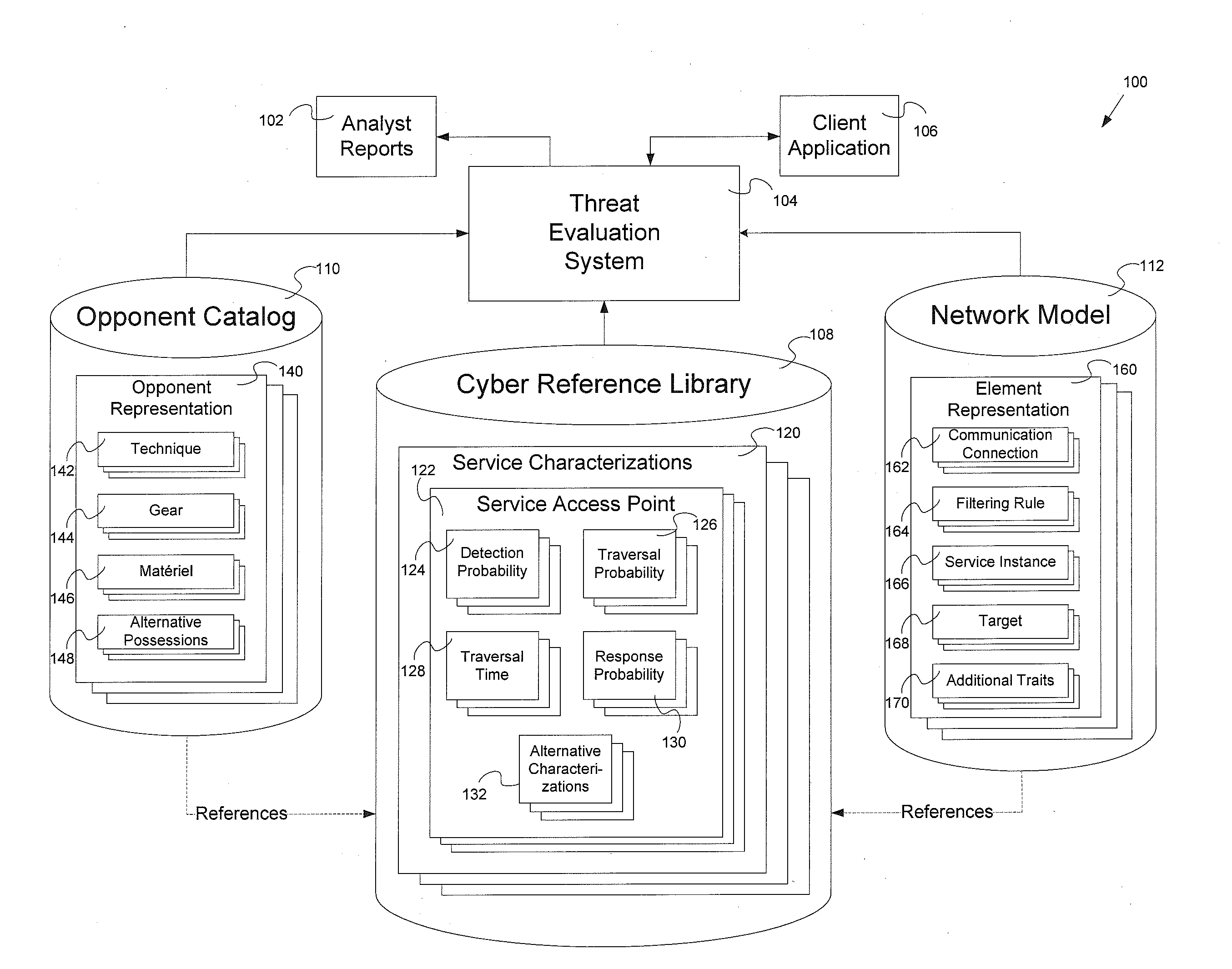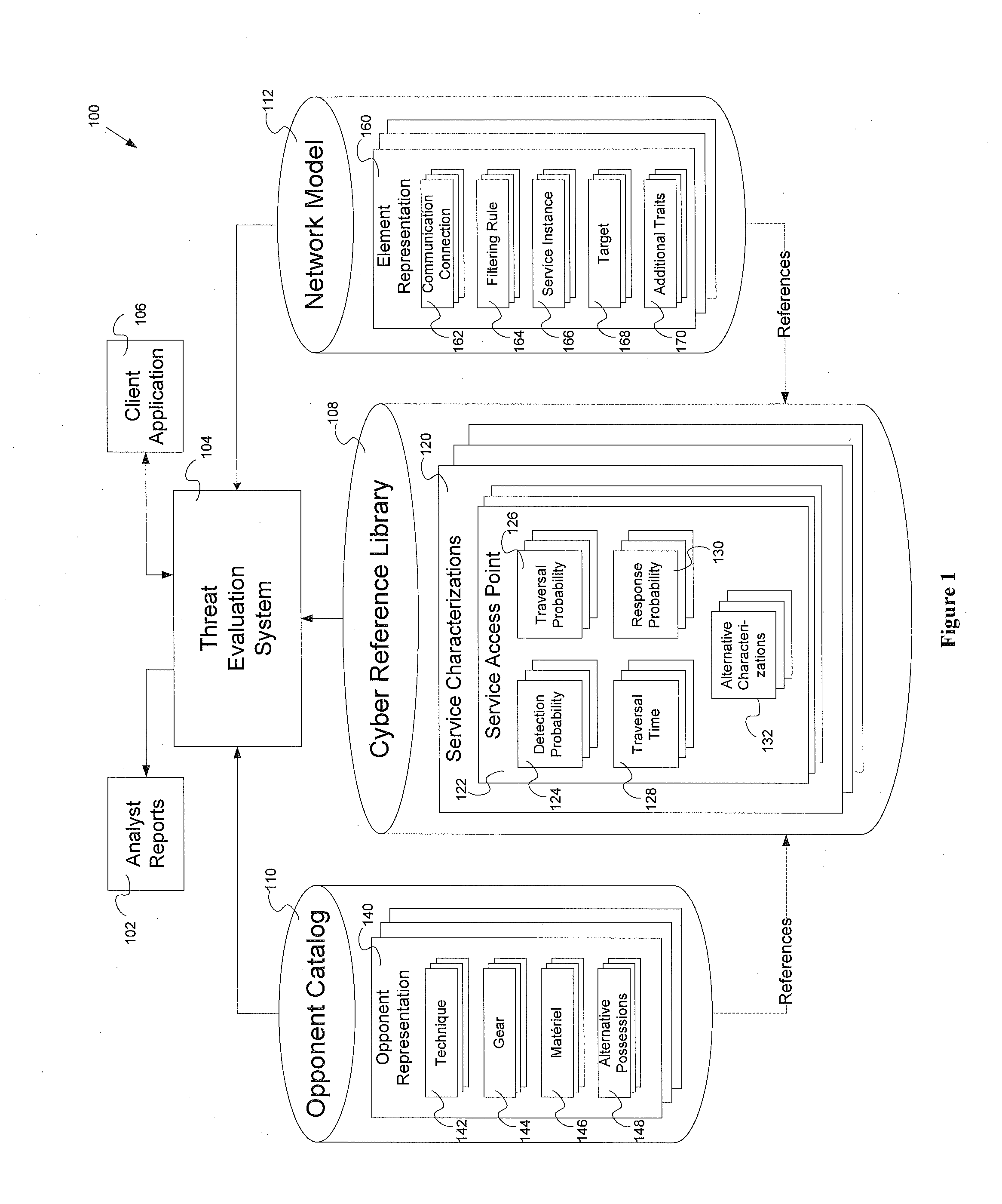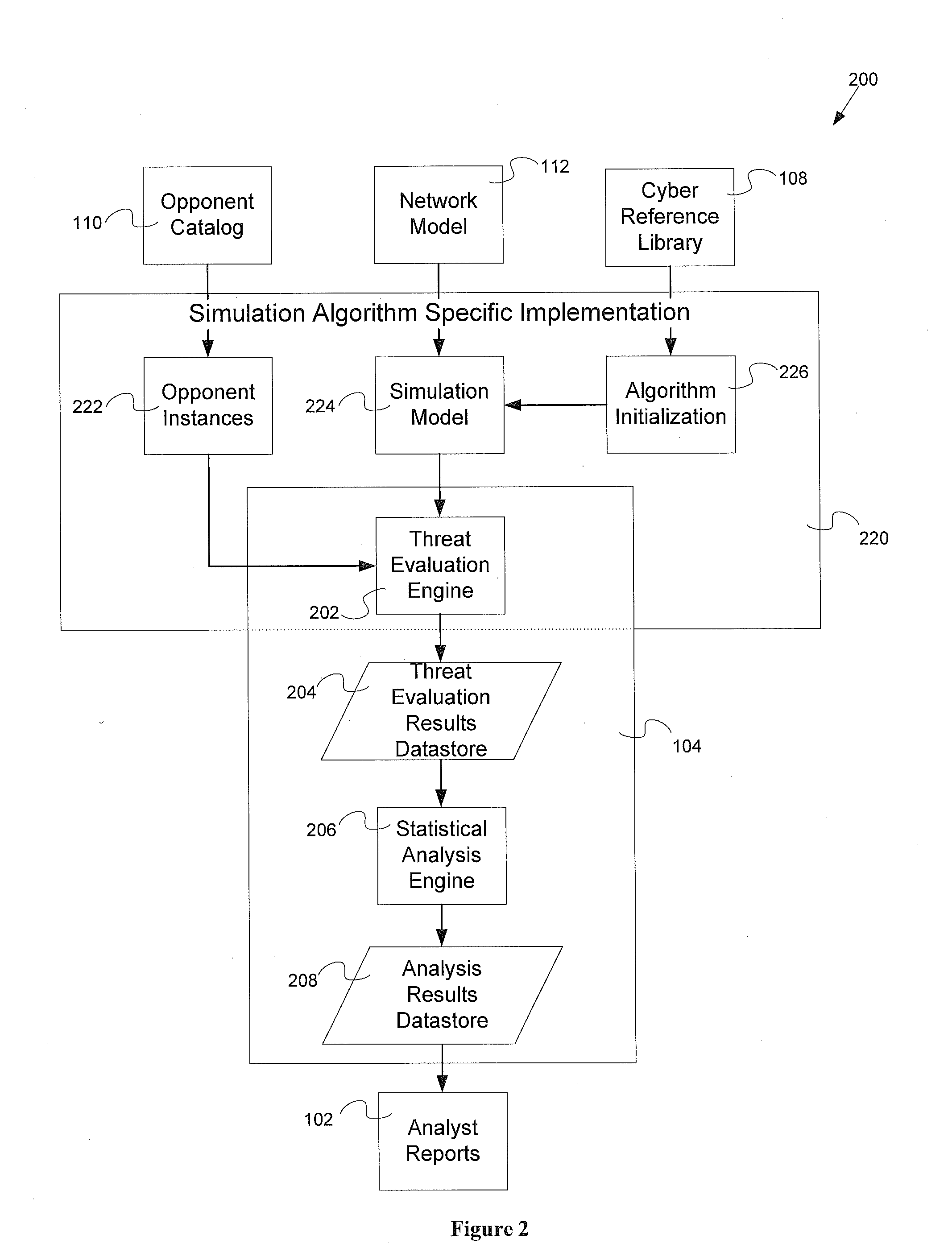Threat evaluation system and method
a technology of evaluation system and evaluation point, applied in the field of evaluation system and method, can solve the problems of communication network administrators' unwillingness to allow an evaluation point, disruption or damage to the elements on their network, and further limitation of evaluation points
- Summary
- Abstract
- Description
- Claims
- Application Information
AI Technical Summary
Benefits of technology
Problems solved by technology
Method used
Image
Examples
example 1
[0128]The example in FIG. 9 displays a model where a target is located on user storage server 902. This target might be some intellectual property, personally identifiable information, revenue forecasts, or any other information that is proprietary or restricted by a company. The target data is exposed through a common Internet file system (CIFS) service 904 that provides shared access to files (this service is also commonly known as server message block (SMB)). Typically, a computer providing services such as this might use a centralized user authentication and authorization system such as Microsoft's Active Directory or LDAP. It might also allow for remote access services such as Microsoft's Remote Desktop Connection or OpenSSH so that administrators might more easily manage the machine. However, in an effort to keep this example simple we will assume that there are no other services operating on the storage server 902 at this time.
[0129]In this simple example, the cyber reference...
example 2
[0139]Example 2 shown in FIG. 10, extends upon the previous example by adding a workstation 1032 connected to a network switch 1024 that then provides access to the CIFS service 904 (refer to the inset for the network configuration). In this somewhat more complicated example, the network model contains several new paths connecting the user storage server 904 to a network switch 1022 and then onto a workstation 1032. The cyber reference library 108 will contain several additional services to accommodate these changes.
[0140]First, the switching service must allow networked access to the CIFS service 904. This is accomplished by adding a switching service 1024 which contains a single ingress access point 1026 connecting to each of the three authentication access points on the CIFS service 904. It also contains a single egress 1027 access point that is connected from the target-file read access point 916. We will assume that this switch does not restrict network traffic and is not capab...
example 3
[0148]This example entails a phishing attack aimed at installing malicious software onto an inside user's workstation. This example is unusual in that that it is indirect as it requires a naïve (or nefarious) action by an inside user to accomplish the attack. Further, the attack requires the user to access external services hosting malware. To elaborate, phishing involves an attempt to subvert users to perform an activity by masquerading as a trustworthy actor in an electronic communication such as an email. This type of subversive activities includes, but is not limited to, providing data or installing malicious software onto their machines. This example, unlike the previous two, will not assign example values to the probability distributions because the calculation of any results is too difficult to briefly describe even with simplified assumptions.
[0149]FIG. 11 displays a simple example network where a phishing attack might be executed. This network contains a firewall 1120 conne...
PUM
 Login to View More
Login to View More Abstract
Description
Claims
Application Information
 Login to View More
Login to View More - R&D
- Intellectual Property
- Life Sciences
- Materials
- Tech Scout
- Unparalleled Data Quality
- Higher Quality Content
- 60% Fewer Hallucinations
Browse by: Latest US Patents, China's latest patents, Technical Efficacy Thesaurus, Application Domain, Technology Topic, Popular Technical Reports.
© 2025 PatSnap. All rights reserved.Legal|Privacy policy|Modern Slavery Act Transparency Statement|Sitemap|About US| Contact US: help@patsnap.com



